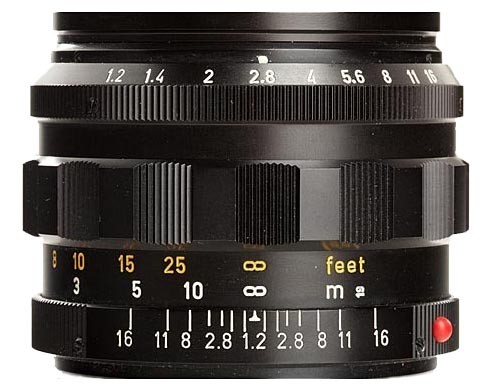Noctilux 50 mm f/1.2
Noctilux 50 mm f/1.2
May 24, 2014

Noctilux 50 mm f/1.2
Though it was welcomed as a sensation and endowed with extraordinary capabilities, commercially the Noctilux 50 mm f/1.2 was a disaster. In the nine years of its production from 1966 to 1975, a mere 1,700 models were produced.
The first of three Noctilux versions, it consisted of 6 elements constructed in 4 groups. Two of the elements featured aspherical surfaces – which were painstakingly manufactured using a specially created grinding machine, and newly developed polishing processes. The machine included an elaborately designed diamond cutting head that made it possible to grind the aspherical form within tolerances of 1/1000th of a millimetre.
The aim was to facilitate an image that was rich in contrast and entirely free of reflections, even in challenging light conditions. And the intense efforts certainly paid off – the open aperture performance of the Noctilux 50 mm f/1.2 was far superior to any of the other light-gathering titans of its time.
Eventually, however, Leitz' first forays into asphere production were deemed too complex and costly, and a few years on, Walter Mandler developed the even faster – and purely spherical – Noctilux 50 mm f/1.
The first of three Noctilux versions, it consisted of 6 elements constructed in 4 groups. Two of the elements featured aspherical surfaces – which were painstakingly manufactured using a specially created grinding machine, and newly developed polishing processes. The machine included an elaborately designed diamond cutting head that made it possible to grind the aspherical form within tolerances of 1/1000th of a millimetre.
The aim was to facilitate an image that was rich in contrast and entirely free of reflections, even in challenging light conditions. And the intense efforts certainly paid off – the open aperture performance of the Noctilux 50 mm f/1.2 was far superior to any of the other light-gathering titans of its time.
Eventually, however, Leitz' first forays into asphere production were deemed too complex and costly, and a few years on, Walter Mandler developed the even faster – and purely spherical – Noctilux 50 mm f/1.

Noctilux 50 mm f/1.2